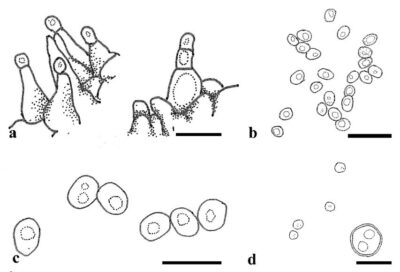Fungalpedia – Note 361, Alloconiothyrium
Alloconiothyrium Verkley, Göker & Stielow
Citation when using this data: Tibpromma et al. 2024 (in prep.) – Fungalpedia, Ascomycota.
Index Fungorum, Facesoffungi, MycoBank, GenBank, Fig. 1
Classification: Didymosphaeriaceae, Pleosporales, Pleosporomycetidae, Dothideomycetes, Pezizomycotina, Ascomycota, Fungi.
The monotypic genus Alloconiothyrium (Didymosphaeriaceae) was established by Verkley et al. (2014) with the type species Alloconiothyrium aptrootii. To date, only three species have been accepted in Alloconiothyrium, including the type species, and these species have been isolated from different substrates. Alloconiothyrium aptrootii was isolated from a soil sample, A. camelliae was isolated from the leaves of Camellia sinensis, and A. encephalarti was isolated from Encephalartos sp. (Zamiaceae) (Verkley et al. 2014, Crous et al. 2019, Ariyawansa et al. 2020). The asexual morph of Alloconiothyrium was characterized by pycnidial or eustromatic conidiomata, holoblastic, annellidic conidiogenous cells, and olivaceous-brown and irregular outline, surface roughened conidia, globose, think-walled, brown chlamydospores (Verkley et al. 2014).
Type species: Alloconiothyrium aptrootii Verkley, Göker & Stielow
Other accepted species: Species Fungorum – search Alloconiothyrium
Figure 1 – Morphology of Alloconiothyrium. a Conidiogenous cells. b, c Conidia. d Chlamydospores. Scale bars: a, b, d = 10 µm, c = 5 µm. Redrawn from Verkley et al. (2014).
References
Entry by
Yang EF, Department of Biology, Faculty of Science, Chiang Mai University, Chiang Mai 50200, Thailand; Center for Yunnan Plateau Biological Resources Protection and Utilization, College of Biological Resource and Food Engineering, Qujing Normal University, Qujing, Yunnan 655011, China.
(Edited by Saowaluck Tibpromma, Samaneh Chaharmiri-Dokhaharani, & Achala R. Rathnayaka)
Published online 14 November 2024
